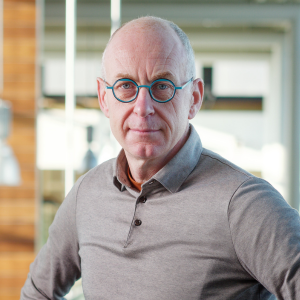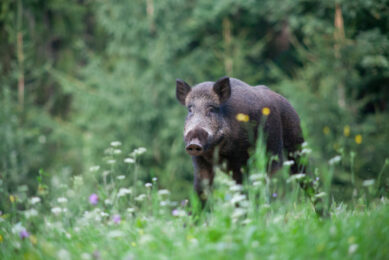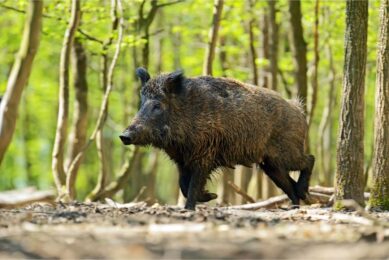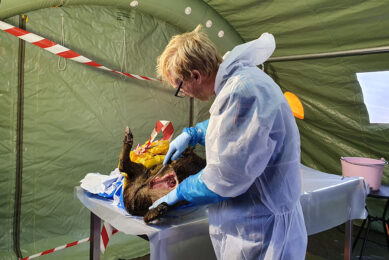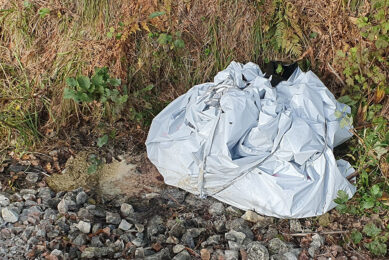Farm visit Sweden: Clean pig pens, no manual labour required
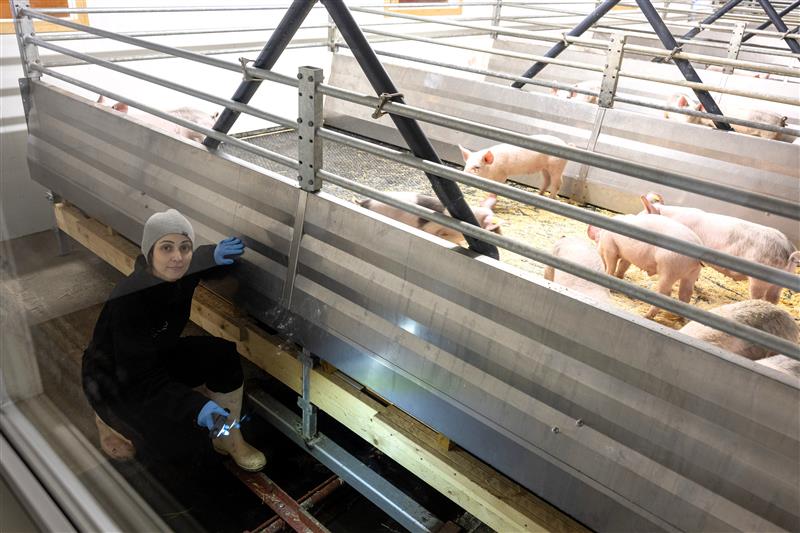
Using the Moving Floor concept, pig houses can be made into emission low units. At the moment, 3 pen types are available, all of standard-size dimensions. The concept, originally designed for dairy farms, can now also be admired in a demo pig house in Sweden.
Not a single pig is showing any signs of panic whether the floor will shift again. No need for that, as the mode of action of Moving Floor is not as drastic as its name might suggest. Depending on settings, the floor regularly but carefully rotates several inches to one side. The pigs hardly respond to that, that’s visible as soon as the belt starts. The concept does not lead to any stress or injury to pigs, says the company’s director Peg Söderberg – as the company carried out research about it. Söderberg says, “The pigs’ stress level in a pig house having Moving Floor is the same as in conventional pig facilities. The pigs’ claws and knees got photographed about 17,000 times, in 6 different age groups. Those images did not show any signs of abnormalities.”
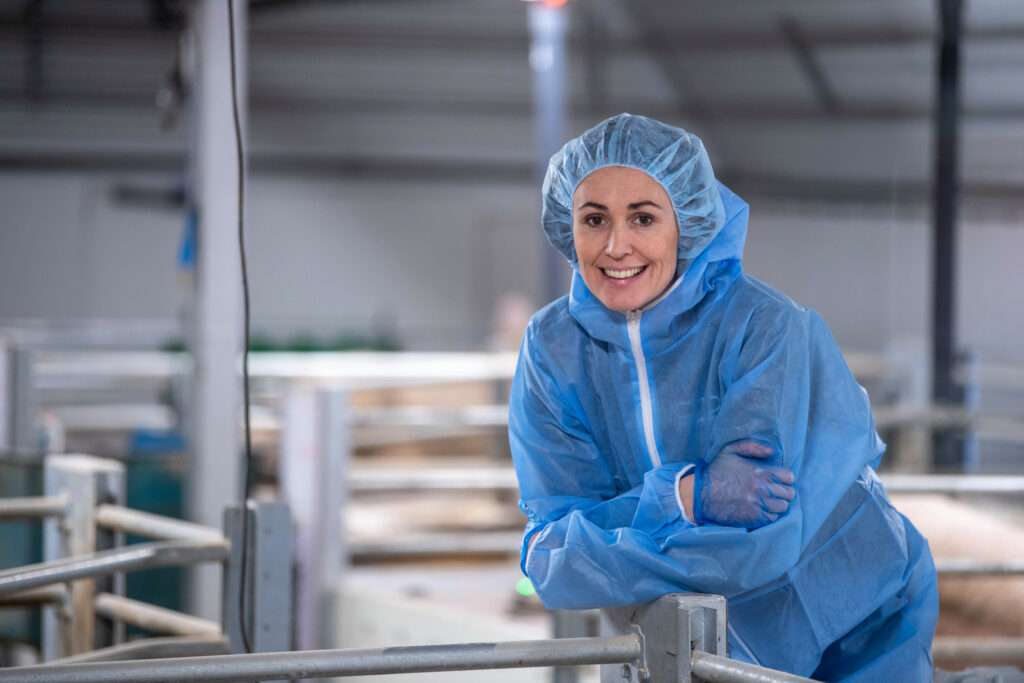
Daytime manure removal
Moving Floor is a Swedish concept for daytime manure removal. It is a modular system, for use in farrowing, piglet and finishing pig houses. The basis of the concept is a plastic floor, which rotates like an escalator. At the end of the pen, the plastic floor slides along a scraper. Manure and straw fall into the central drain, with a chain system for manure removal. That way, the pigs always lie in a clean pen and the manure is removed before most emissions are created. The system is entirely computer-controlled.
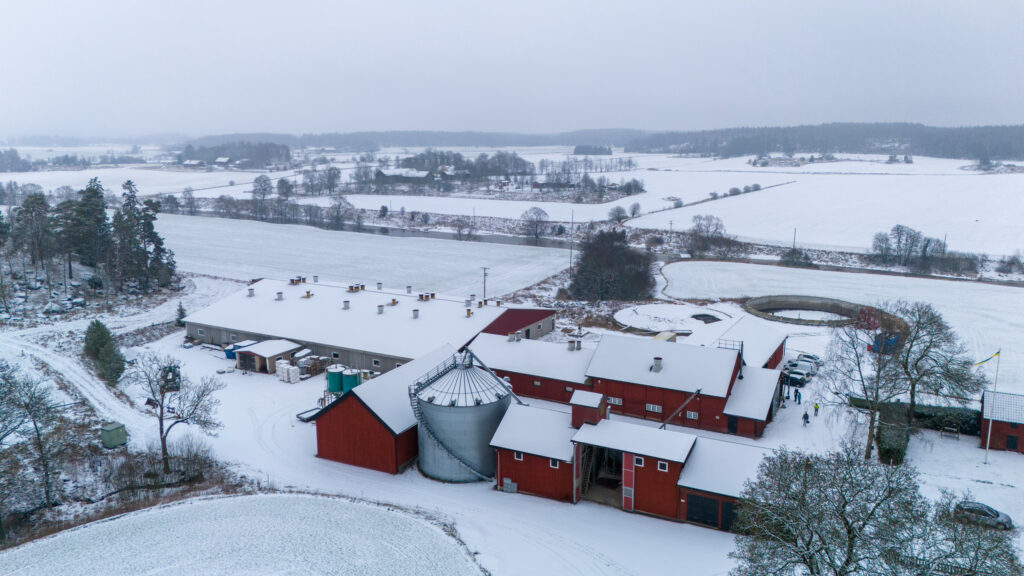
Renovated and equipped
The concept has been retrofitted into a renovated pig house which had been existing for 100 years, near Västerås, Sweden. What is on show in this demonstration farm is the latest version of Moving Floor. The site offers a place to 12 free farrowing pens, each with a surface area of 6.4 m2. Two other sections house twelve piglet and finishing pig pens.
At the time of the visit, the piglets just got moved to the finishing pig section. That is why occasionally there was some hierarchy fighting visible. The finishing pig pens are 5.4 m wide and 2.4 m long. There are 10 pigs per pen, meaning the animals have plenty of space. A pig pen module weighs 1,200 kg.
Modular construction
The first sows arrived in the farm in January 2024. In order to be able to implement a Moving Floor, what is required is a flat floor bed as well as a manure discharge channel. During retrofitting, supporting elements are placed on the floor, after which the pens with movable floors are placed on top of them. Finally, an inspection corridor will get the same level as the pen floor.
Söderberg says, “Any technology already available in the pig house prior to retrofitting can continue to function without any problem.” That also applies to this particular location, where inlet valves control the ventilation system. The Moving Floor concept is suitable for every situation and for every farm size, says Söderberg. For the time being, the company works with fixed pen sizes per animal category.
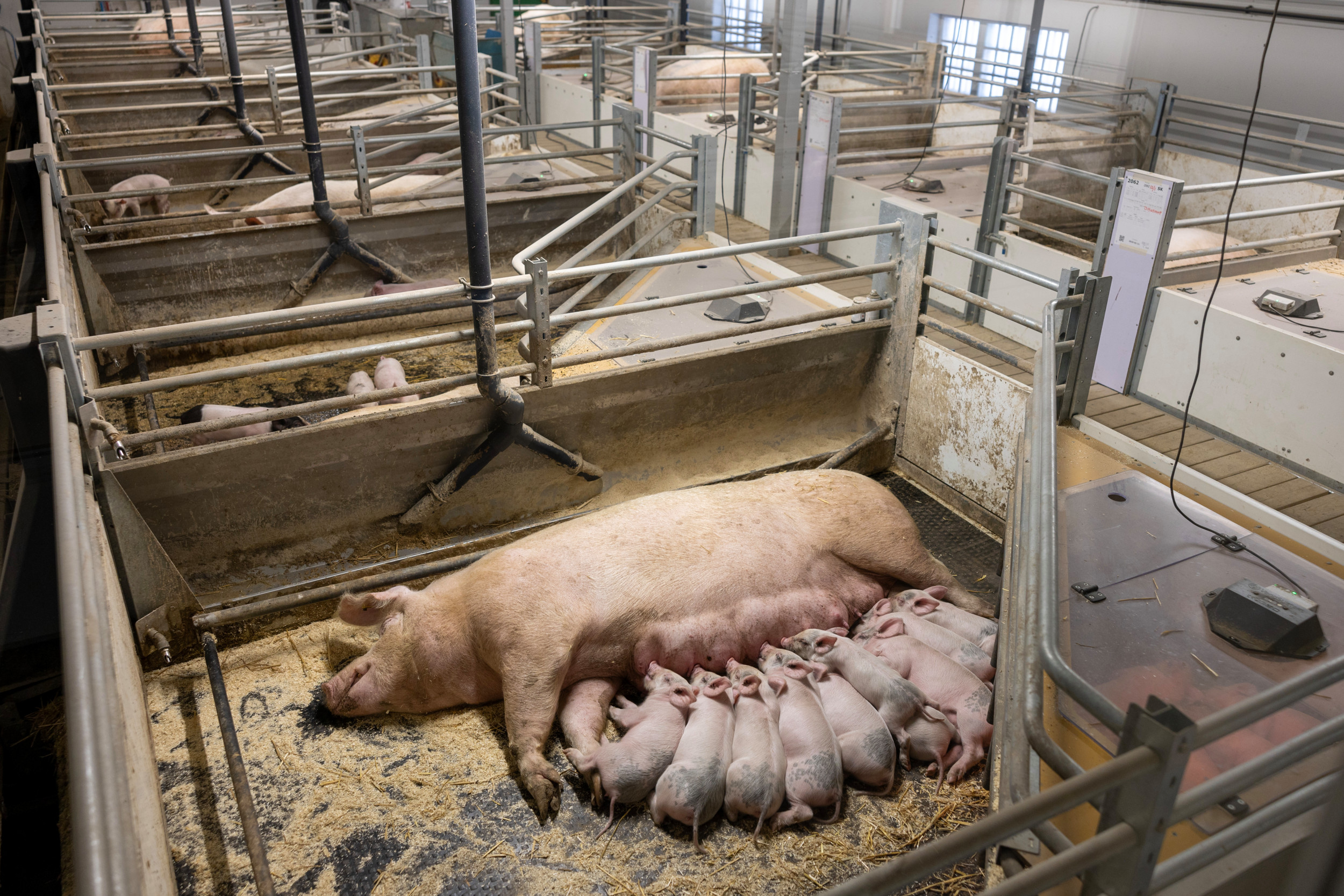
Special type of plastic
The movable floor is made of a special type of plastic that cannot be destroyed by pigs. The pneumatical system should be able to last 15 years, Söderberg says. When having 10 pigs per pen, the investment comes down to €430 per pig place. That amount includes troughs (as they cannot be fixed to the floor due to the moving) and A-Flow software (more about this technology later on).
Compared to demolishing and constructing anew, retrofitting is more favourable, she says. The technology ought to be checked once a year, with component costs being between €10-15 per pen annually. The only thing that the producers would have to do is clean the scrapers on the belt. The cleaner the scrapers, the better they can do their job.
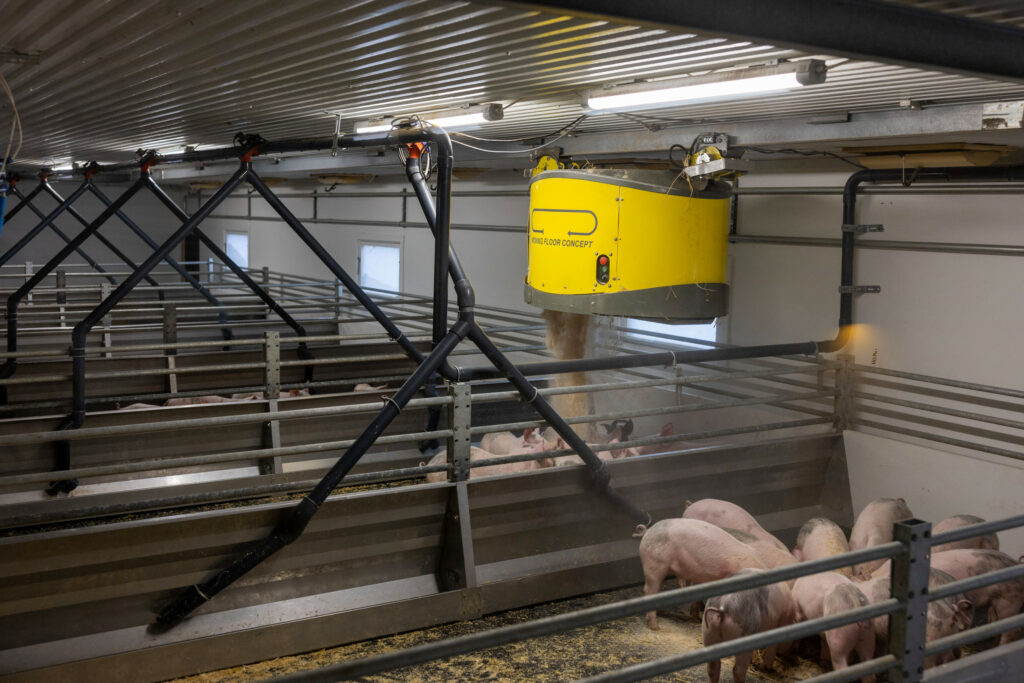
Emissions and animal health
The company claims up to 85% reduction in ammonia emissions can be achieved. For that to happen, the belt has to go around once per hour, Söderberg says. Research Institutes of Sweden (RISE), a governmental organisation, is currently conducting research into emissions and dust concentrations in pig houses. Initial independent research results are expected late 2025.
The company states that the concept offers an answer to most current pig industry challenges, including keeping pigs with long tails. Söderberg says: “If you wanted to get rid of health, welfare and environmental challenges once and for all, that is possible with Moving Floor.”
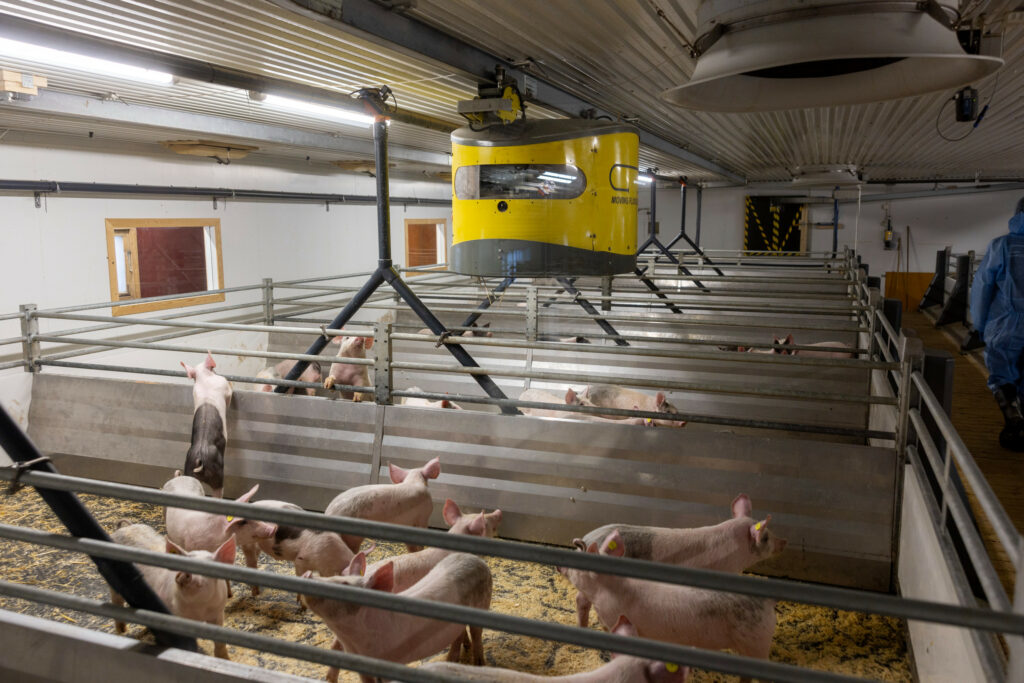
Straw dispenser
An automatic system ensures that straw or shavings fall into the pens, at the place where the pigs are supposed to lie. That would be where the belt enters the pen. In addition, lying behaviour is conditioned by wetting the floor on the scraper side when the animals are introduced. The use of straw bedding is essential. Söderberg says, “You need to use bedding for air quality, a clean floor and welfare.” The Specific Pathogen Free (SPF) pigs in the demo farm house reach an average growth of 1,020 g/day.
An insulated sea container with a composting unit can be found adjacent to the pig house. In the container, an external company is carrying out research into manure composting. In addition to fermentation, composting can help to limit emissions in the chain and to make the concept circular.
The liquid and solid fractions do not get separated in the pig house. Still, the percentage of dry matter in the manure can be controlled. On one hand that can be done by using the straw bedding, but another option is to allow it to leak the liquid fraction away before the manure is composted.
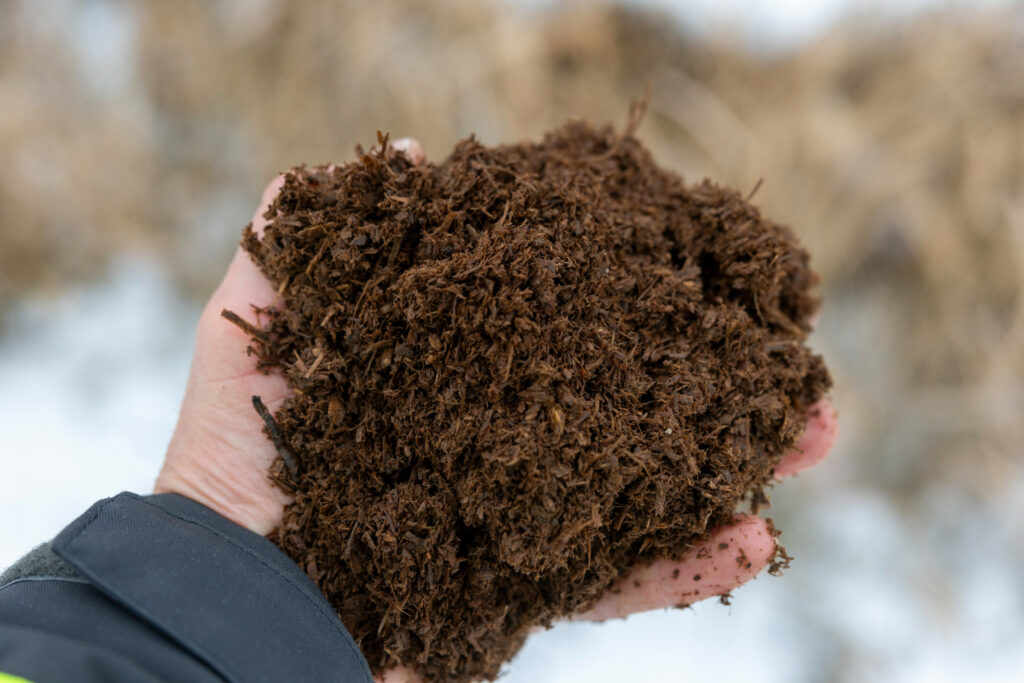
Many years of experience
Moving Floor has built up years of experience. For the time being, the technology is only used commercially on dairy farms, for rearing suckling calves. The company has been thinking of extending the concept to swine production as well; the concept for pigs was launched in 2019. At the recently held EuroTier 2024, the company introduced A-Flow, which consists of software and sensors to detect ammonia emissions.
In dairy, the concept has moved on to be present on more than 100 users worldwide. Dairy farmers choose the system as it saves labour and is good for animal health, Söderberg explains. After all, cleaning out the stables is no longer necessary.


